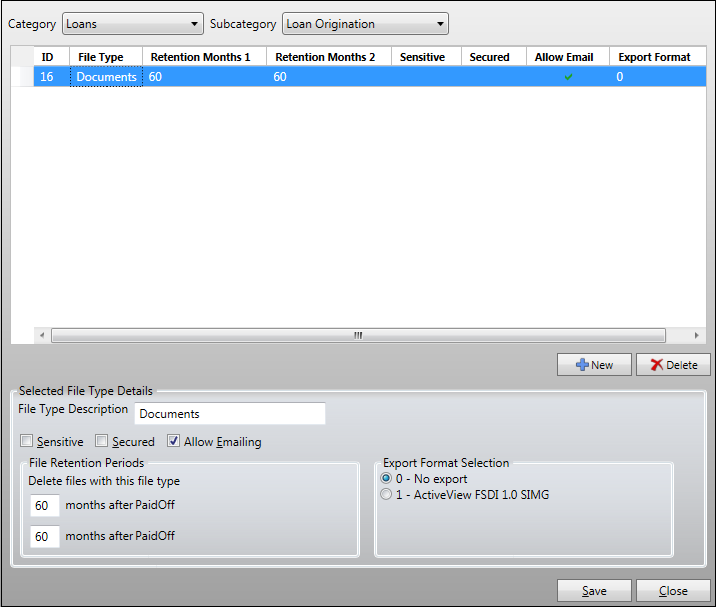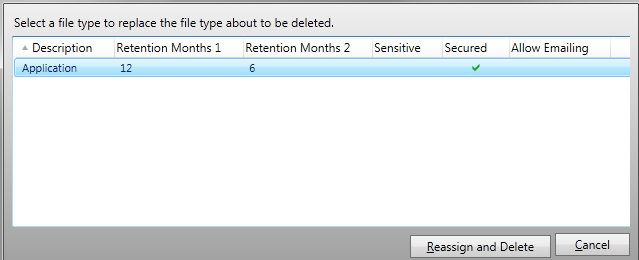Navigation: GOLDVault User Guide >
The File Types screen is used to create new file types, change properties associated with the file types, or to remove file types.

The top portion of the screen displays available file types for the selected category and subcategory, their retention events, and file security options. It also allows you to create new file types or remove file types. The bottom portion allows for changing file type attributes. First, select a category and subcategory using the Category and Subcategory drop-down lists, then select a file type from the list above, and then make changes to the attributes.
Feature |
Definition |
Create New File Type |
Click |
Delete Selected File Type |
Highlight a file type, then click

Select the desired file type. Images for the two file types will be merged into the file type you select when you click the <Reassign and Delete> button. If there is only one file type in a subcategory, you will not be able to delete it. |
File Type Description |
Change the file type description here. Note that all documents assigned to the file type will remain assigned to it, so you should not change the meaning of the file type when you change its description. |
Sensitive |
Check this box to indicate that it is a sensitive document. Sensitive documents have different email security than standard documents. |
Secured |
Check this box to require user access security in order to view or edit files with this file type. |
Allow Emailing |
Check this box if documents of this file type can be emailed. If this is not checked, this document will not be able to be emailed at all. Institution settings control whether sensitive documents can be emailed or not, so if "Sensitive" is checked and "Allow Emailing" is checked, you still may not be able to email the document. |
File Retention Periods |
Enter the number of months after the retention event to keep the document on file for each of the chosen category retention events. When a number is entered in the category, the subcategory, and the file type retention period fields, the largest value for each retention period will be used for retaining the document. |
Export Format Selection |
Banks can identify images that should be copied to an export folder for third-party import when adding files to GOLDVault. The purpose is to allow banks to get image files that are saved in GOLDVault automatically into a format in which they can be imported into third-party software.
The bank specifies which file types are sent to the export folder. The Export Format Selection field group contains the supported export formats. Currently, the only two supported export formats are "no export" and Active View's FSDI SIMG format.
For any image file type that you want to export, go to the File Types dialog and select the desired export format.
The Active View format requires some fields that are not available to the system. If you are creating export files, you must set these fields up in your user settings. To change the user settings, click the <User Settings> button in the upper right corner of the View Attached Files screen to display the User Settings dialog. Please note that the user settings are unique to each user. If multiple users are adding export files, they will each need to set up their own user settings appropriately. There is no institution default setting. |
|
Next topic: Email Settings Screen |
|
Previous topic: Subcategories Screen |